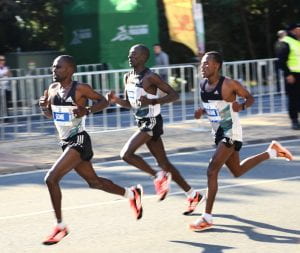A new research article shows that the heart, besides humans’ joints and tendons, is also optimized for endurance. But, this depends on how active the person is. To conduct this study, scientist gathered 160 adult males from four different groups: football linemen, long-distance runners, inactive adults, and Native American farmers celebrated for their running ability, known as the Tarahumara. Scientist also looked at the hearts of 43 adult male chimpanzees for comparison.
To examine the heart of these groups, scientist used an ultrasound. When examining the hearts of the four groups, researchers reported in the Proceedings of the National Academy of Sciences that there were noticeable differences in the left ventricle-the thickest of the heart’s four chambers-where blood is pumped. The long-distance runners and Tarahumara farmers had long ventricles with thin walls. This helps to pump large volumes of blood for a long period of time. The inactive adults and the football linemen, who are trained for short, high-intensity exercise, had wider ventricles with thick walls. The same shape was found in the chimpanzees who participate in short, high-intensity exercises like climbing and fighting. They had the shortest and thickest ventricles.
The wider ventricles and thick walls are beneficial to the chimps and football linemen because during high-intensity workouts when blood pressure in the arteries surge for a short amount of time, it ensures that enough blood is flowing to the brain to keep consciousness.
The long-distance runners and the Tarahumara farmers are less likely to experience problems like high blood pressure and cardiovascular diseases because of their heart shape.
Fortunately, People’s heart shape is not permanent! Scientists suggest that changes in the heart shape is possible with endurance activities like swimming and running over the course of many years.
So stop procrastinating and go for that run!



angtigen
I really enjoyed your article abbyogenesis. From the title of your article to the very last sentence you wrote I was hooked. It’s intriguing to know that the different distances we run can affect the form of our ventricles, thus changing the shape of our heart, and how much blood gets pumped in and out during such activities Ventricular Dyssynchrony limits the chambers in the heart to fill as they normally would. I wonder how running can affect this condition. Or perhaps running can decrease the likelihood of a person getting Ventricular Dyssynchrony. It’s an interesting concept to consider, https://www.cedars-sinai.edu/Patients/Health-Conditions/Ventricular-Dyssynchrony.aspx.